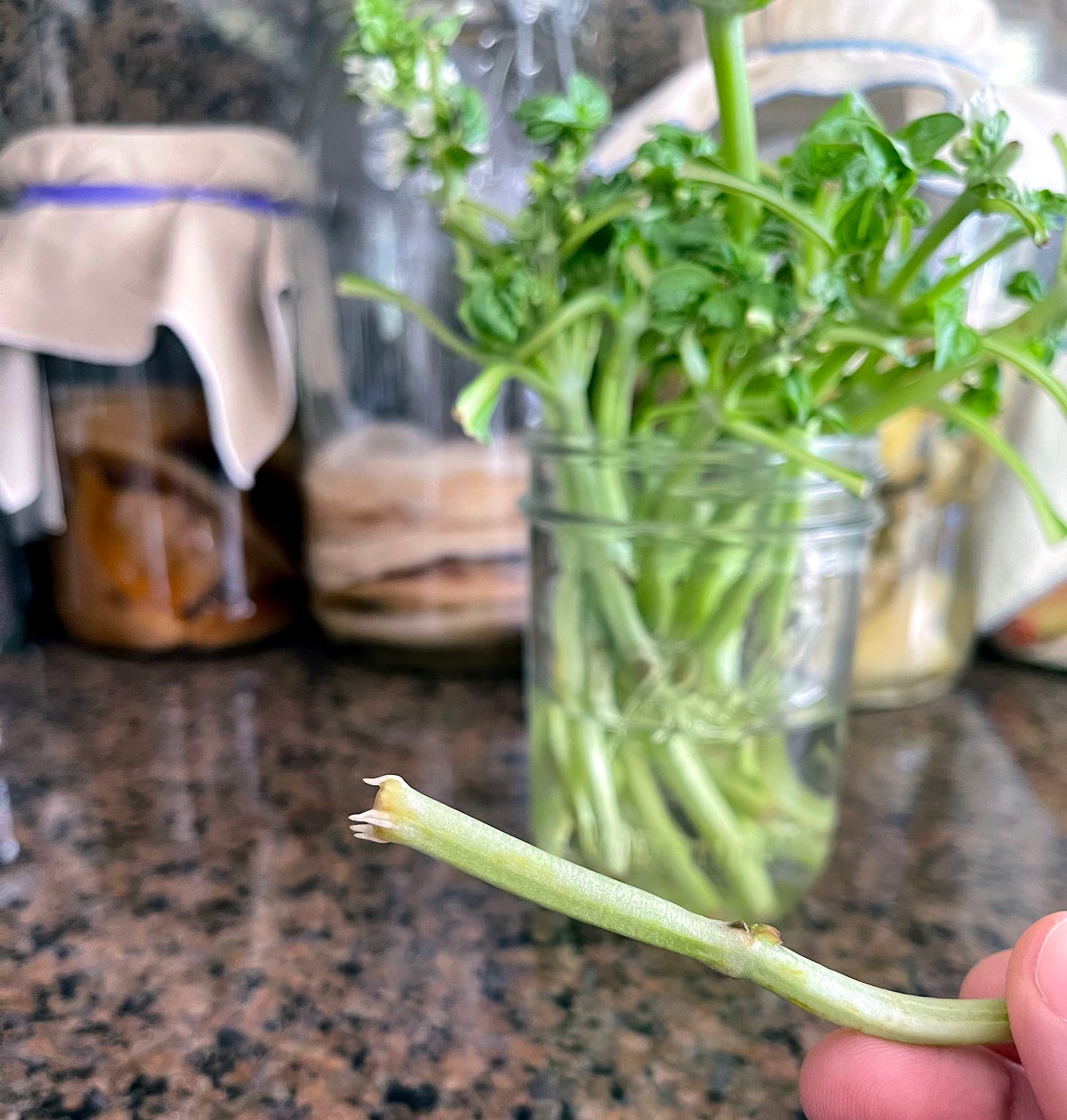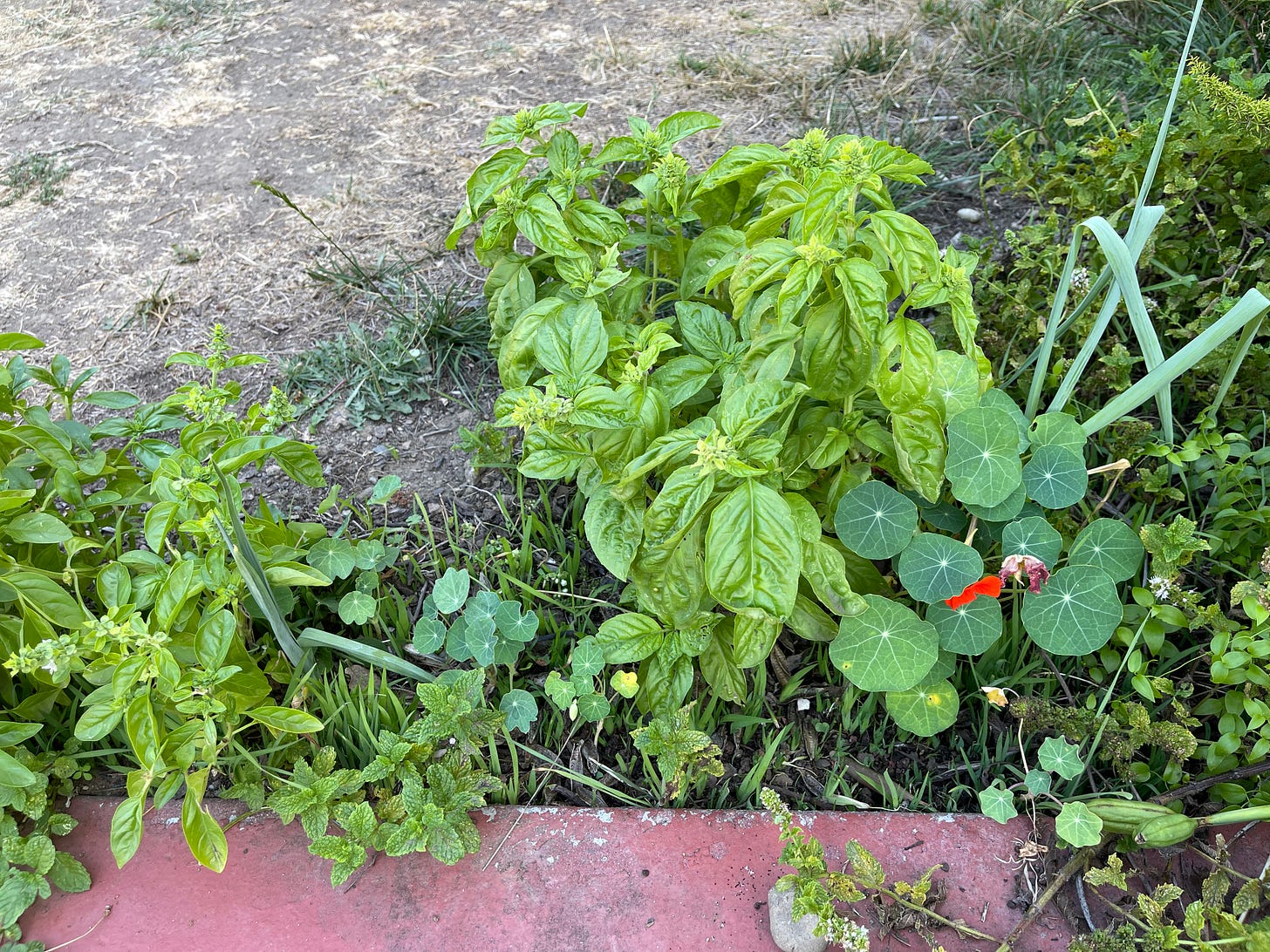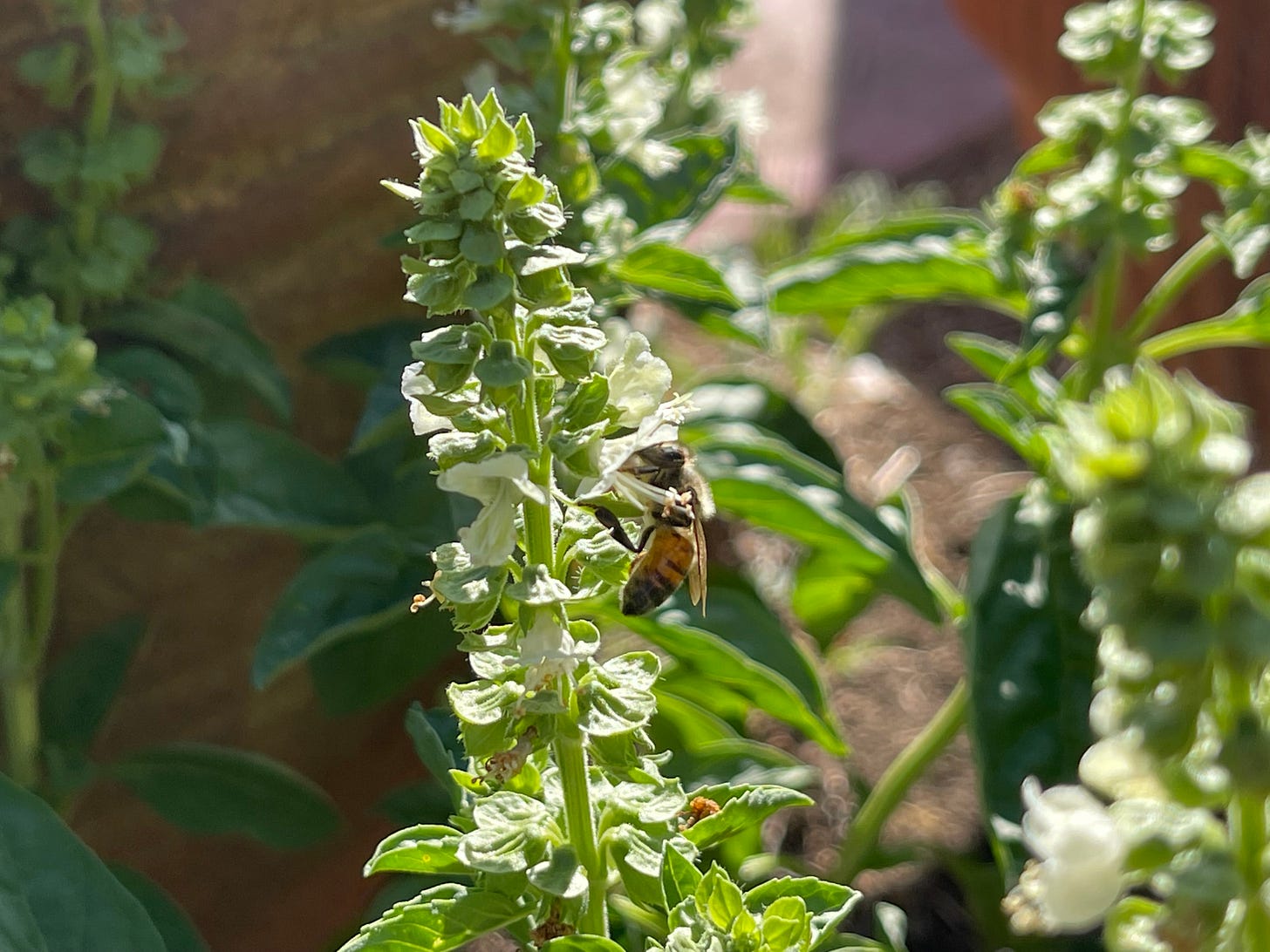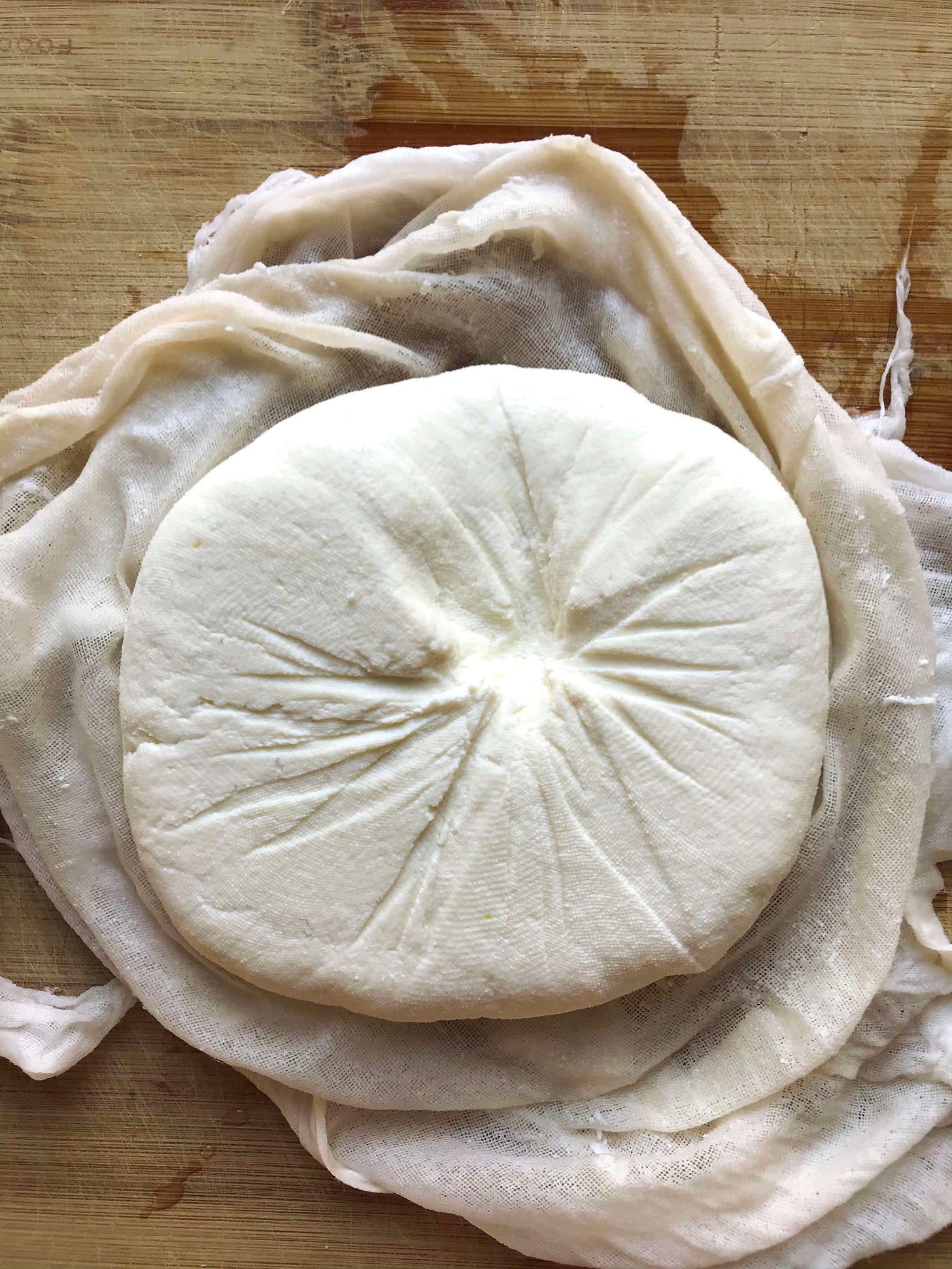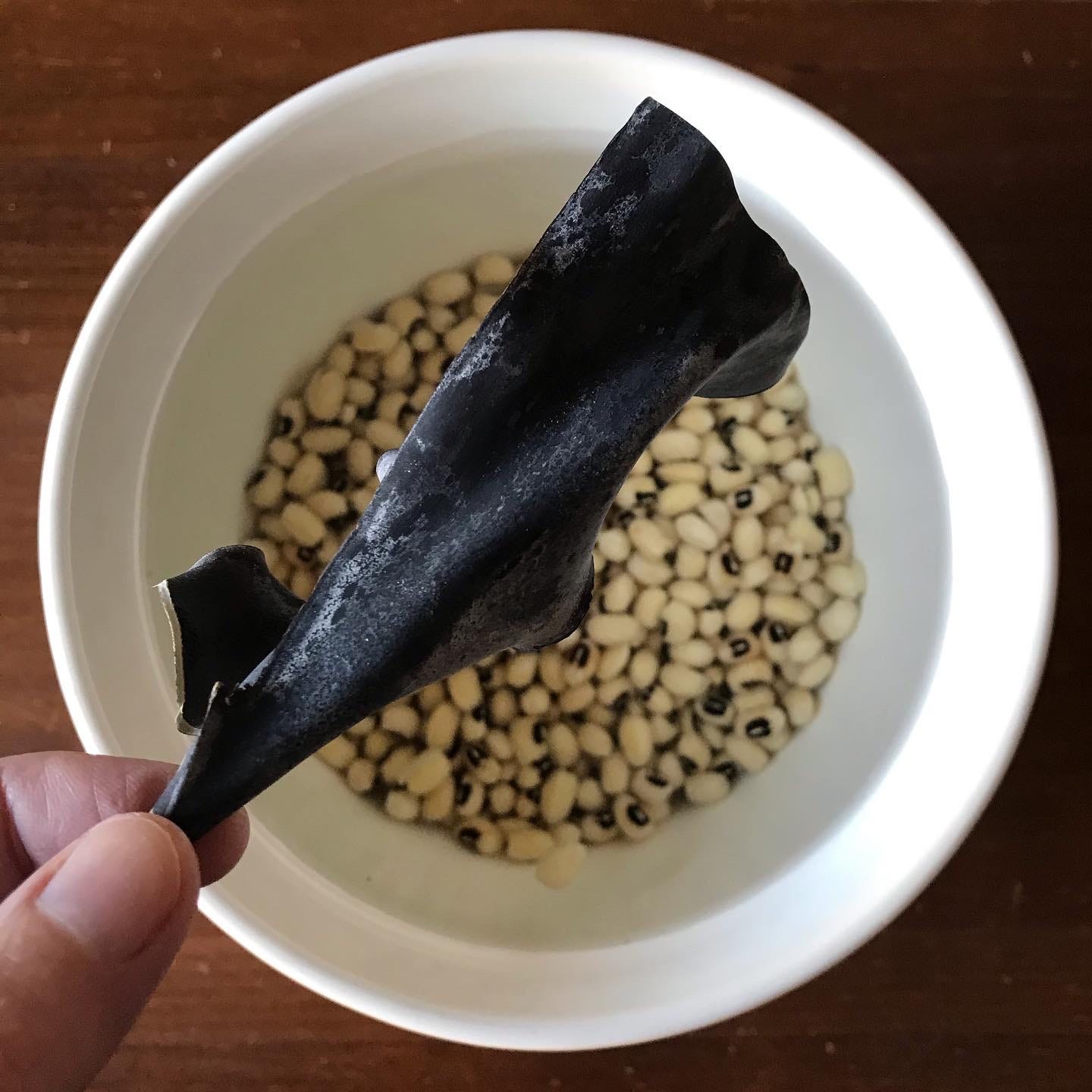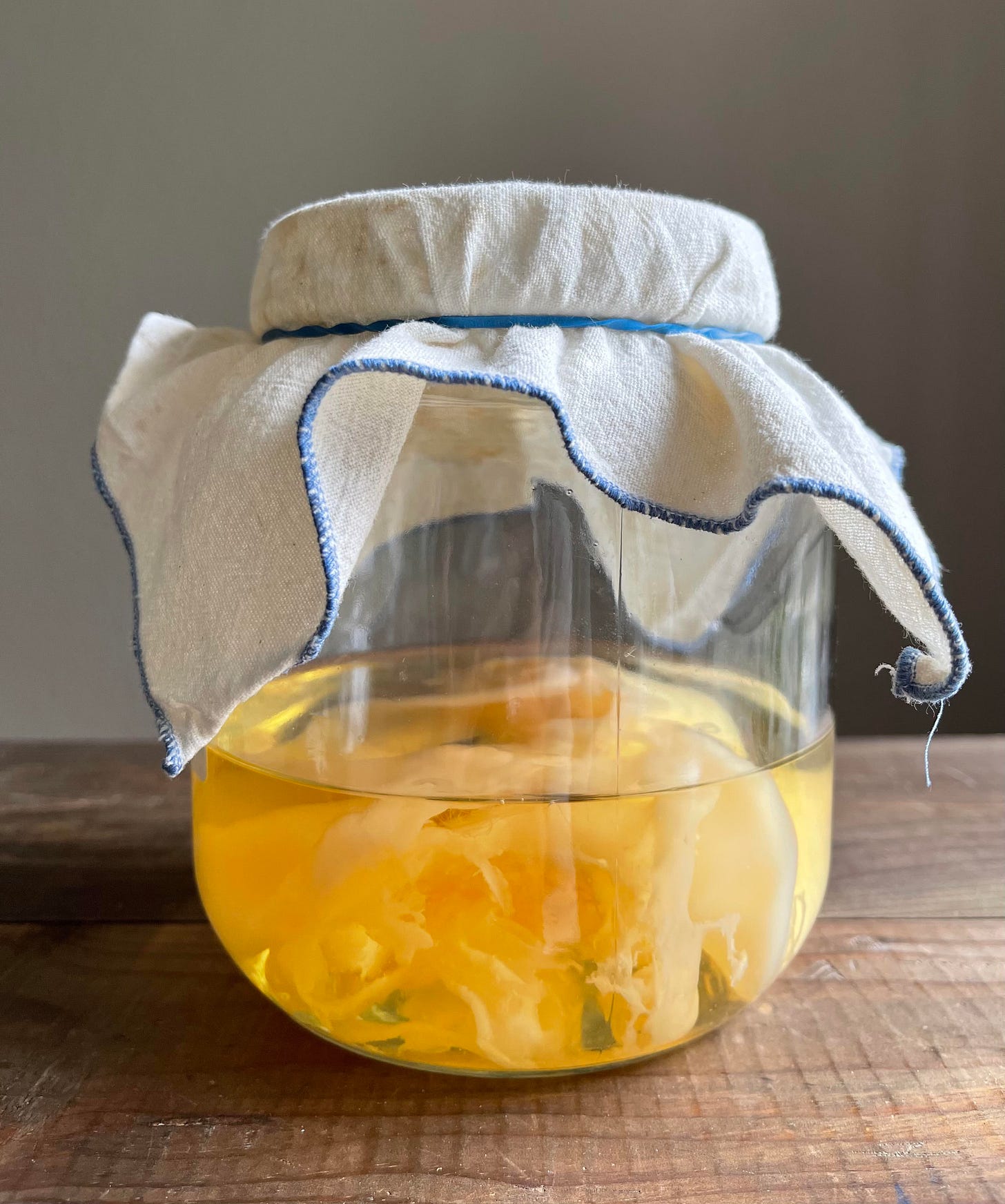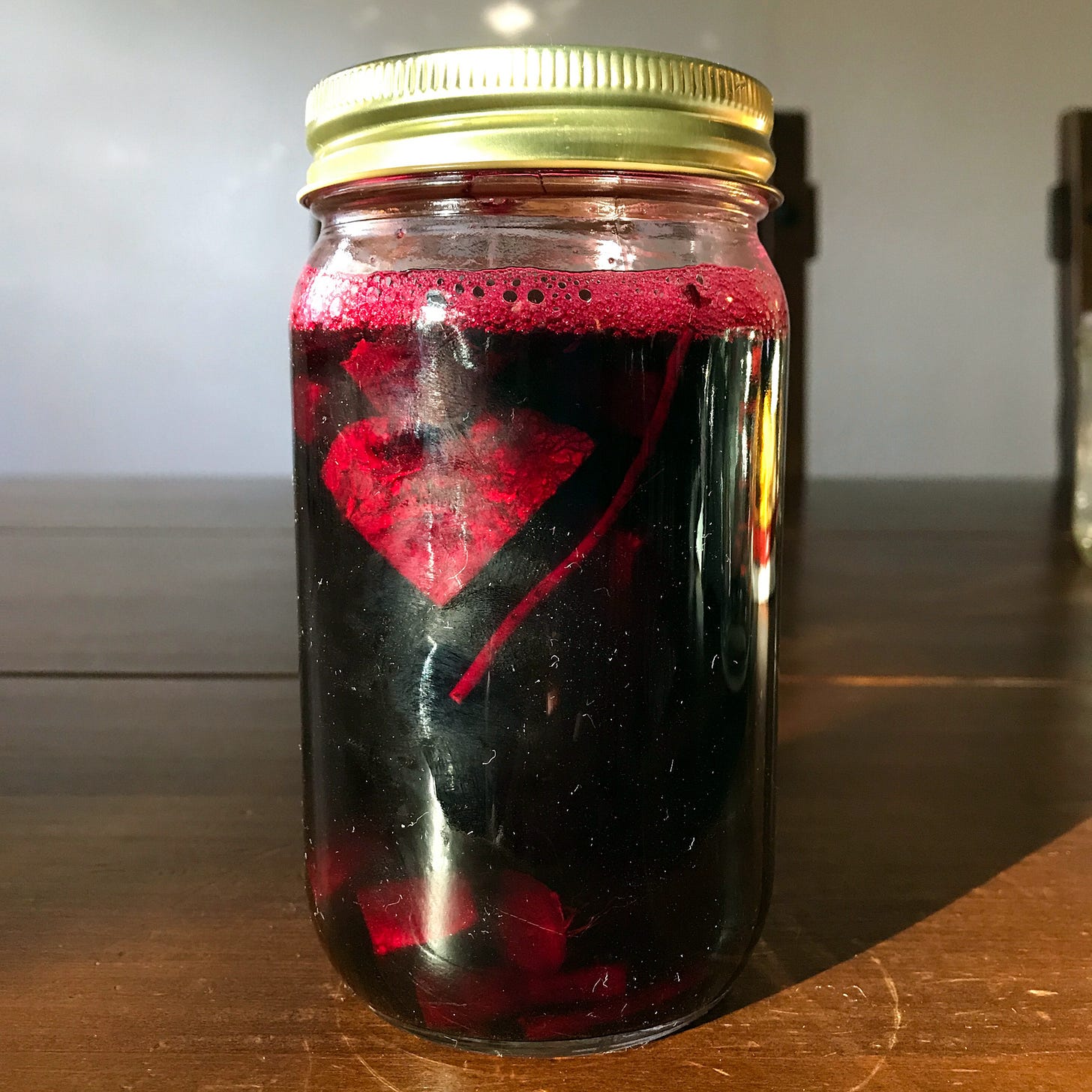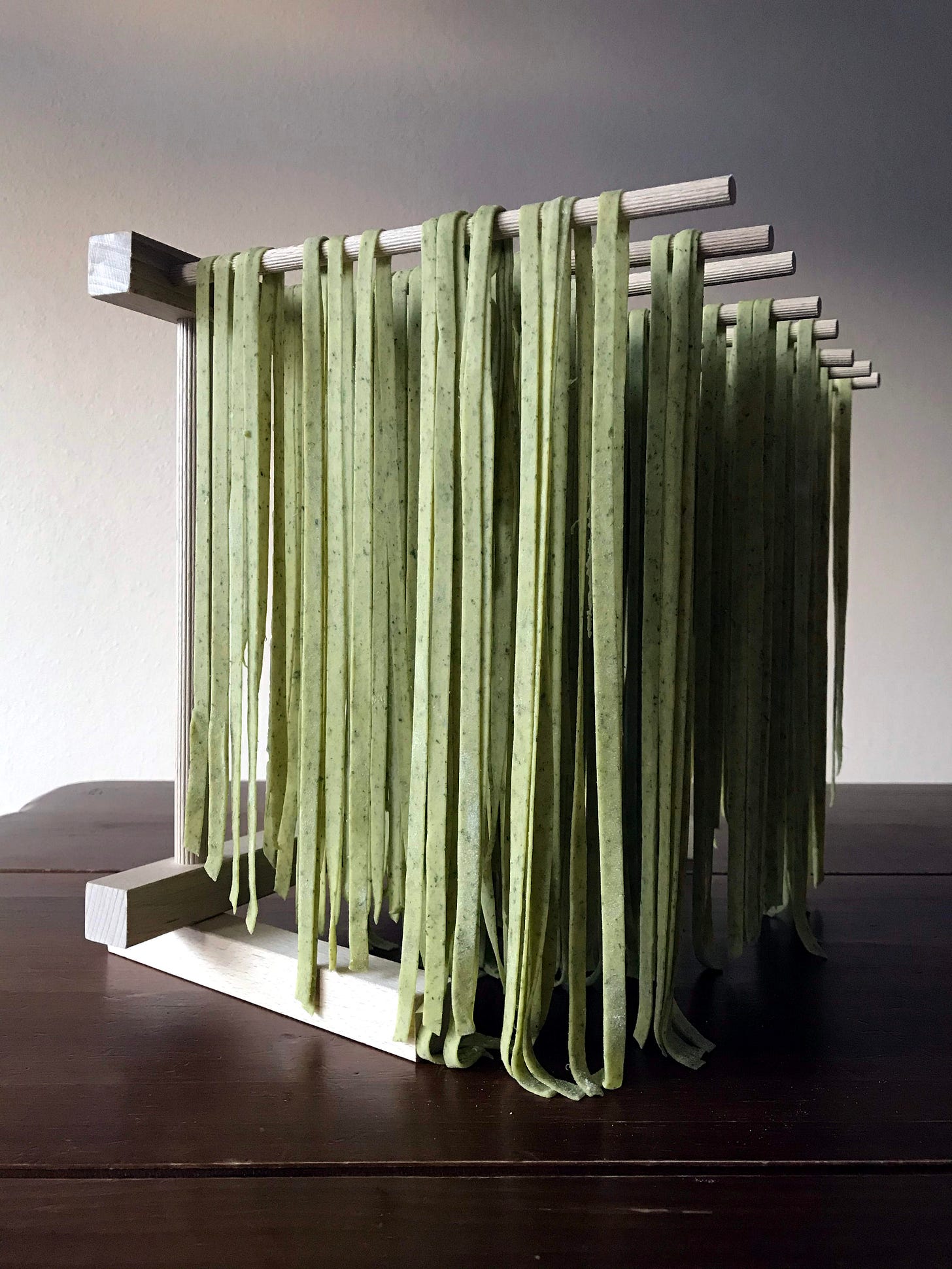7 More Creative Uses for Food Scraps
Figuring out how to use all the food boosts creativity and flavor
The parameter of cooking with what’s on hand inspires creativity, leads to fearless experimentation and results in tastier dishes. Using every last bit of food also makes cooking more fun and less expensive. I honestly can’t think of a downside. Here are some ideas for cooking with various food scraps.
1. Regrow basil from stems
When I buy a very fresh bunch of basil, I’ll often take a few sprigs, trim the ends, put the sprigs in a jar of water, wait for roots to sprout and regrow the basil either in a pot or directly in the soil outside.
This spring, after my daughter MK stripped the leaves from a bunch of basil for pesto, I wondered if the same root-sprouting trick would work for those bare stems. It did! Within a few weeks of sitting in water, small sprouts appeared on the stems and new leaves began to grow.
The bushy basil in the first pic below grew from less than half of those stripped stems. I’ve let other basil go to seed to attract bees so I can (I hope) harvest basil seeds to plant next year.
If you don’t have access to a yard, regrowing basil in a pot indoors also does the trick.
Go here for more info on regrowing basil from stems.
2. Make quick cheese with milk past its prime
Several months ago, my daughter MK rescued a few cartons of milk from a café where she had been working. The milk had long passed its best-before date but remained unopened. It looked fine, smelled perhaps a tiny bit off and tasted absolutely fine, so with it, I made, among other things, spectacular paneer, a quick, soft cheese for Indian dishes. So good!
If you find yourself with excess milk on your hands that may head south soon, you can also:
Bake with it. Quick breads, muffins, cornbread, bread pudding or french toast, for example, won’t likely go uneaten.
Cook with it. Make quiche, scalloped potatoes, mashed potatoes, strata and so on.
Go here for the paneer recipe.
3. Save that bean broth
If you cook dry beans, save the broth. You’ll have flavorful broth prepped and ready to add to your next dish. I use bean broth to cook lentils—or more beans—to thicken up soup and I even add unsalted black bean broth to this sourdough discard chocolate cake.
4. Brew vinegar from leftover wine
Believe it or not, leftover wine happens. You open a bottle and dislike it or the last few ounces linger in the bottle and, now opened, head south. And actually, if you never have leftover wine on hand, buying an inexpensive bottle to make vinegar costs less per ounce than buying wine vinegar at the store (unless you buy vats of it in bulk).
To brew my first batch of wine vinegar, I used a mother of vinegar (MOV) which happened to develop on pineapple scrap vinegar I made after brewing tepache, an effervescent fermented Mexican drink made from pineapple peels and scraps (the tepache recipe is in my cookbook). If you don’t have an MOV, you can use raw, unfiltered, unpasteurized vinegar to make wine vinegar. If an MOV grows in your batch, you’ll soon be overrun with them.
Like all things homemade, the vinegar you make yourself tastes spectacular. Add it to any dishes that could benefit from a bit of acid to brighten them.
Go here for the wine vinegar instructions.
5. Brew beet kvass with scraps and stems
You can render at least 8 ounces of beet kvass—a savory, salty, fermented and probiotic drink—from a handful of beet scraps alone. (Usually, you make a larger amount from whole beets.) A bottle this size will cost about $7 in the store if you can find it. When I make beet pickles, I simultaneously start beet kvass.
Click here for the beet kvass recipe.
6. Green your pasta with turnip or radish tops
Do you suffer from vegetable tops anxiety, not wanting to throw the greens out but also wondering what to do with them? This pasta recipe can help. It calls for the green leafy tops of turnips or radishes. They add color and, in the case of the radishes, a mild peppery taste.
My daughter MK came up with this idea. She steamed the greens, puréed them and incorporated them into pasta dough. Spinach would work also. Nasturtium leaves would be fabulous on several levels—the color, the foraging, the frugality, the flavor.
If you have some greens left over, toss some into pesto to go with your pasta.
Go here for the turnip-top pasta recipe.
7. Roast pumpkin seeds
‘Tis the season.
I cook whole sugar-pie pumpkins in my pressure cooker (in minutes!) or roast them in the oven. After the pumpkins cool, I halve them, scoop out the seeds and purée the flesh for pumpkin pies, pumpkin bread, pumpkin dal and so on.
Whether you cook pumpkins or carve jack-o-lanterns, save the seeds to make a seasonal treat—roasted pumpkin seeds. Occasionally people will ask if they needed to shell roasted pumpkin seeds before eating. That time-consuming step is not necessary. You eat these casing and all. Just be sure to roast the seeds long enough for the casings to become deliciously crunchy.
Go here for the roasted pumpkin seed recipe.
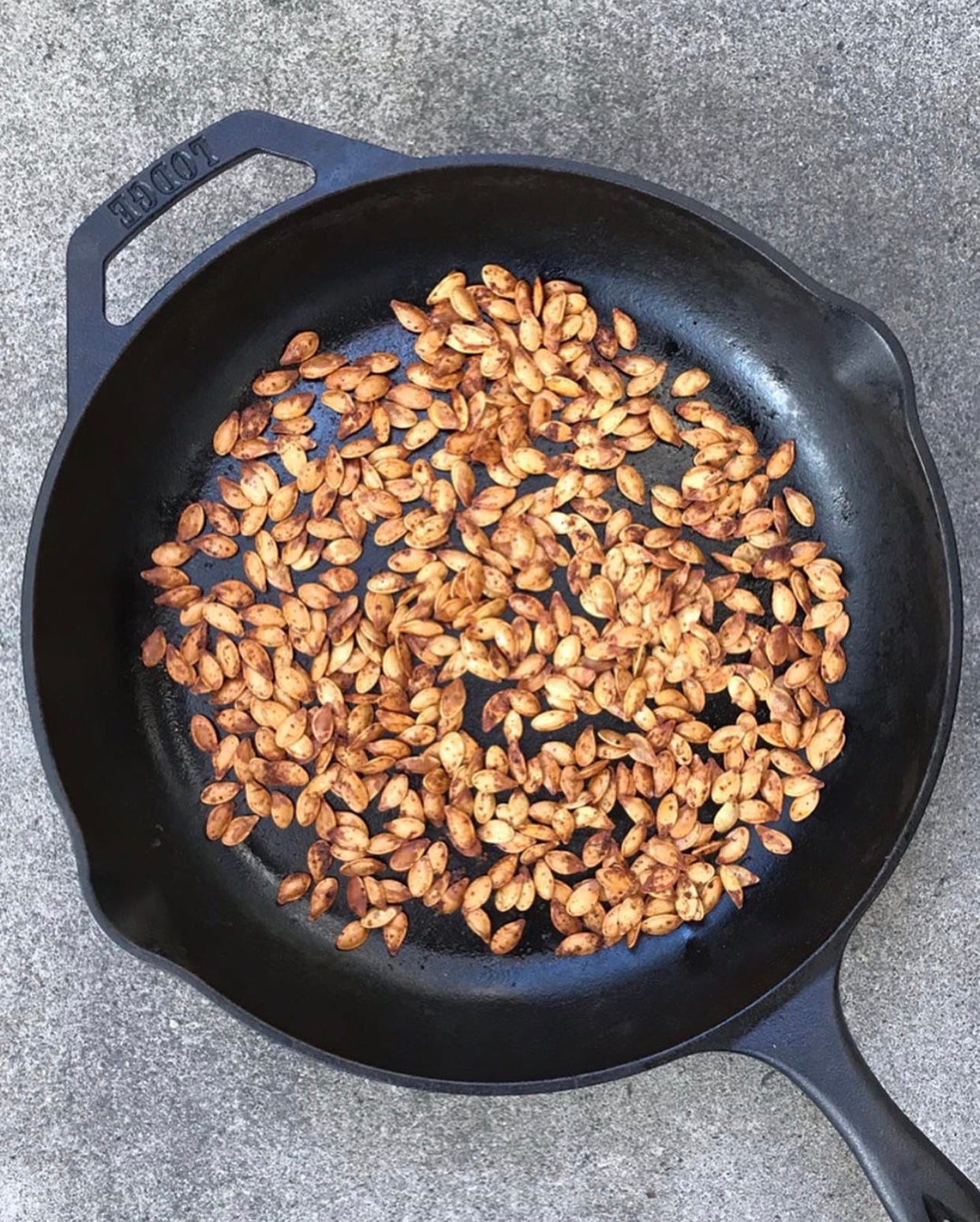
Go here for 16 more ideas for cooking with scraps to reduce food waste, boost taste and save money.
Find more scrappy ideas in my cookbook!




